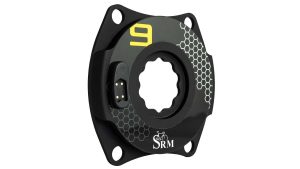
What do the different colors if the indicator LED of the Rechargeable PowerMeter mean?
PowerMeter 9:
- Flashing Yellow – The PowerMeter is reading a cadence and waking up from sleep mode
- Flashing Red – The PowerMeter is connected to a cable and charging
- Flashing Green – The PowerMeter is connected to a cable and charged to 100%
- Quickly flashing Green and Red – Zero Offset Calibration is in progress
- Quickly flashing Green – Zero Offset calibration successful
- Quickly flashing Red – Zero Offset calibration failed
PowerMeter 7 rechargeable:
- Flashing Yellow – The PowerMeter is reading a cadence and waking up from sleep mode
- Glowing Red – The PowerMeter is connected to a cable and charging
- Glowing Green – The PowerMeter is connected to a cable and charged to 100%
What is "zero offset"?
The zero offset is the frequency in Hertz (PM7 and older) or the voltage (PM9) that the PowerMeter is transmitting when no torque is applied. Once torque is applied, the zero offset will rise. It is important to set your zero offset at the beginning of a ride to ensure that your PowerMeter is tared.
PM7 and older: What is "slope"?
Each PowerMeter has a unique “slope” value, which is calculated during the calibration of that specific PowerMeter. The unit used to describe slope is ‘Hz/Nm.’ For example, 20.0 Hz/Nm means that for each Newton Meter of torque applied to the PowerMeter, the output frequency will increase by 20 Hertz.
PM9: What is the “Sensitivity”?
Each PowerMeter has a unique “Sensitivity” value, which is calculated during the calibration of that specific PowerMeter. It is comparable to the “Slope” in older SRM PowerMeters. The unit used to describe sensitivity is μV/Nm.
Can I change chainrings without affecting the slope of my PowerMeter?
- Yes, with the exception of solid TT rings. If you are changing to or from a solid TT ring, it is recommended that you have your PowerMeter re-calibrated.
- Do not over-tighten chainring bolts. Please follow the correct torque specifications.
Why is it important to have my PowerMeter calibrated at the SRM Service Center?
Calibrations done at the SRM Service Centers are the most accurate. We calibrate in a controlled environment using a known force and a calibration jig. This known force is hung from the chainring thus eliminating the friction from the bottom bracket and ensuring the most accurate slope.
My power and cadence readings are zero, erratic, or not accurate?
- The cadence magnet (PM7 and older) is not in the correct position over the reed switch.
- The battery is almost empty or there is damage to the PowerMeter circuit board.
My zero offset is too low (below 200Hz), too high (above 900Hz), or reading Zero. What is the cause?
- Your PowerMeter may have sustained damaged that is beyond the scope of troubleshooting.
- Your PowerMeter battery is low/nearly depleted.
- Its advised you contact your local SRM Service location for a more detailed diagnosis of your technical problem.
Can I physically open my PowerMeter?
We don’t recommend it because all warranty will be voided and you will be responsible for all repair costs.
PM9: What is the difference between magnetless cadence mode and magnet cadence?
In magnetless cadence mode the PowerMeter does not require a magnet on the frame to measure the cadence. If you already have a magnet installed, you can turn off magnetless mode. This will increase the standby time of the Powermeter, but will have a negative effect on the PowerMeters accuracy when you are using oval chainrings.
PM9: How do I know if my PowerMeter is running the most recent firmware?
Once you connect your PowerMeter 9 to your mobile app, the app will automatically check the firmware. If there is a new version available, the app will give you a notification. This will require an active internet connection.
PM9: Does my PM9 work with a SRM PowerControl 7 or older?
PowerMeter 9 does not work with a PC7 or older, because it is using “Ready Calculated Power” to transmit the data. Older PowerControls only support “Crank Torque Frequency”.
Can I use oval chainrings?
Yes, if you are using a SRM PowerMeter 9, oval rings will not have a negative effect on the PowerMeters accuracy, if you are using the magnetless mode.
If you are using a PowerMeter 7 or older, oval rings will have an impact on the measurement accuracy. The PowerMeter will output slightly higher numbers.



